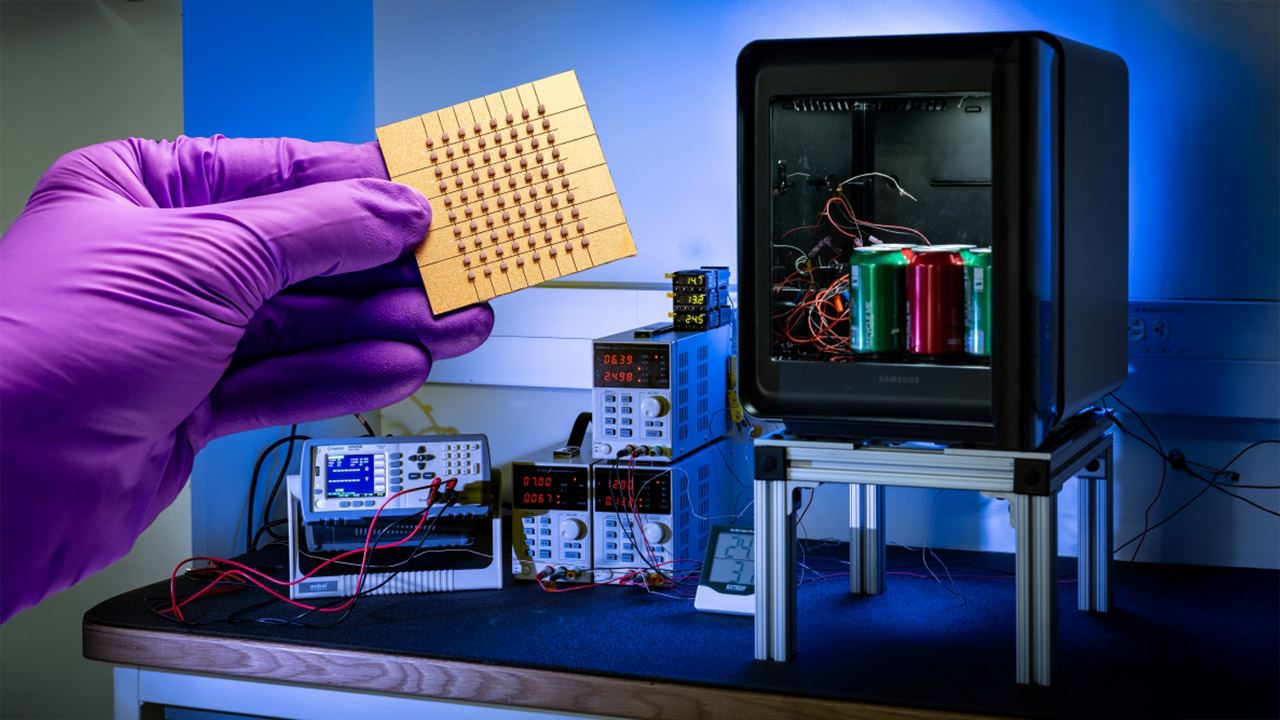
Samsung, the South Korean tech juggernaut known for smartphones and TVs, is diving into bold new waters with Johns Hopkins APL to revolutionize refrigeration. Their breakthrough? A next-gen Peltier cooling system that’s sleek, efficient, and poised to make your current fridge look like a dinosaur.
Peltier cooling—discovered by a 19th-century physicist—works by running current through two materials to chill one side and heat the other. It’s been a niche player in stuff like portable coolers, but old-school Peltier setups were power-hogs with bulky designs. Samsung and APL rewrote the rules, using nano-engineered thin-film tech that’s 75% more efficient and a thousand times thinner. “For the commercialization of high-performance Peltier cooling, achieving superior cooling efficiency in Peltier semiconductor devices is essential,” Samsung said.
- SUPER SLIM. SUPER LIGHT: Galaxy S25 Edge is surprisingly light and our slimmest S Series phone yet. You’ll want to show off this sleek, super-slim...
- OUR POWERFUL 200MP CAMERA ON OUR SLIMMEST S SERIES PHONE: Capture every memory in stunning clarity with our highest-resolution camera on a Galaxy...
- MORE POWER TO YOU: Reimagine what’s possible with Galaxy S25 Edge, featuring our most powerful processor yet. Effortlessly translate your calls,...

Unlike clunky vapor compression fridges that lean on eco-unfriendly refrigerants, Peltier’s solid-state—no moving parts, no nasty gases. It nails precise temps fast, perfect for keeping your ice cream frosty or medical gear chilled. “Compared to traditional vapor compression methods, Peltier cooling enables fast and precise temperature control with a simpler configuration,” Samsung noted.
Johns Hopkins APL brought the brains, building on a decade of nano-thermoelectric research for defense and medical tech. Their CHESS system, the backbone here, doesn’t just cool—it can generate power from heat differences, like your body’s warmth. “This testing system helps evaluate how efficiently the new materials convert electricity into cooling,” APL researchers explained.
Samsung’s showing it off in AI Hybrid Cooling fridges at CES 2025, mixing a compressor with a Peltier module. Hot leftovers? The Peltier blasts cold air, then the compressor takes over for efficiency. “Since refrigerators run 24/7, we placed a strong emphasis on developing a cooling system that meaningfully enhances energy efficiency for users,” said Jeong Seung Moon, Samsung’s R&D boss.
The ripple effects are huge. Data centers could shrink their cooling rigs, medical devices could hit ultra-precise temps, and even your gaming PC could ditch chunky liquid coolers. “The nano-engineered thermoelectric materials, if unleashed into the wilds of the semiconductor cooling industry, could presumably mop up those two main drawbacks to Peltier cooling: energy consumption and heat production,” one outlet reported. Samsung’s not just chilling your groceries—they’re cooling the future.










